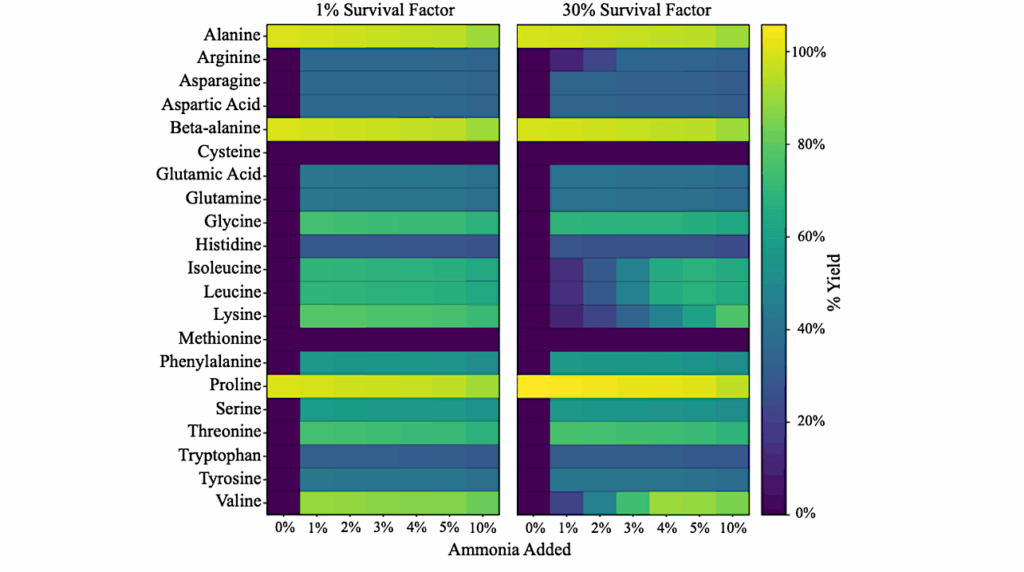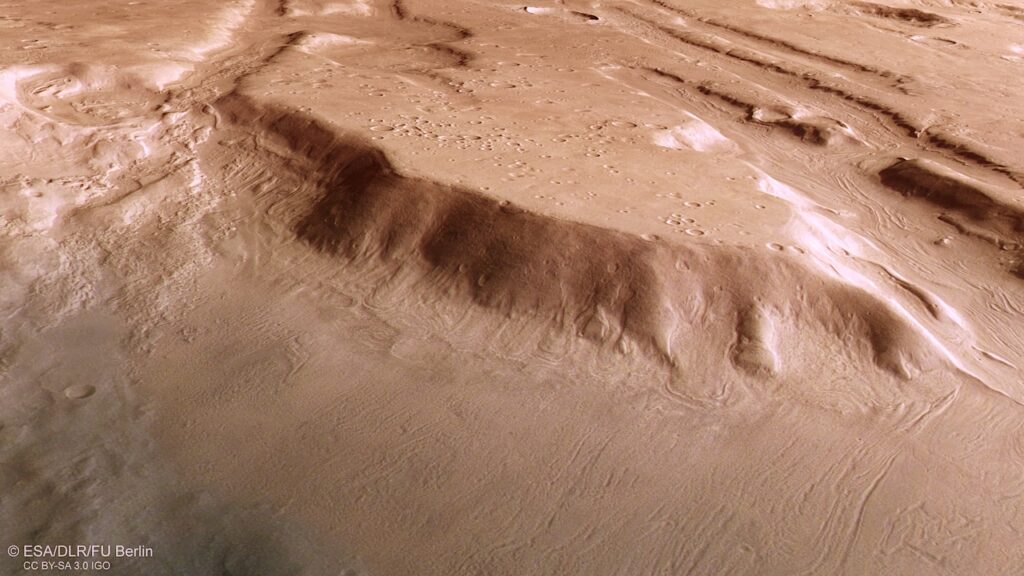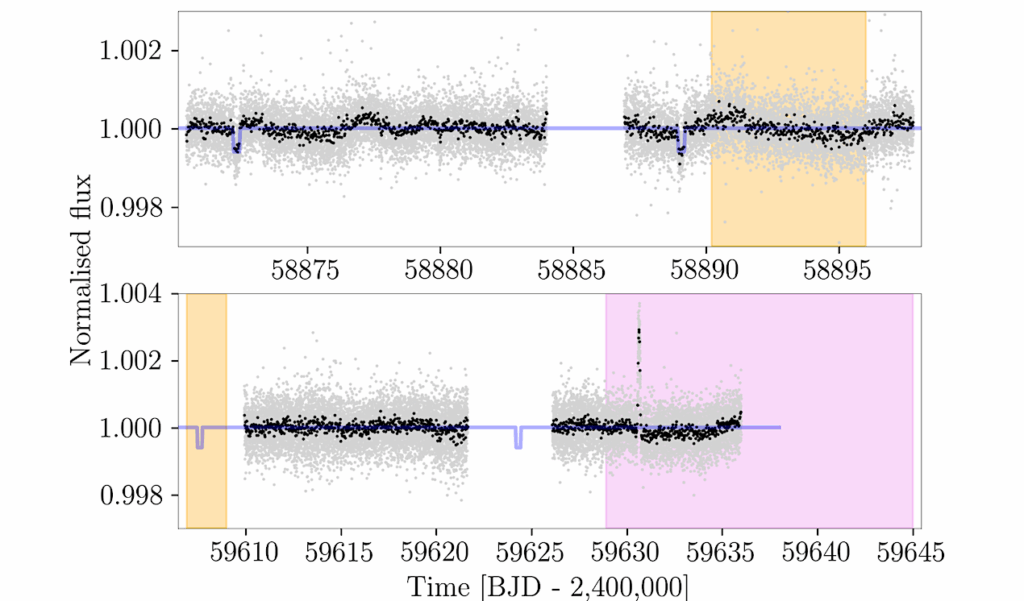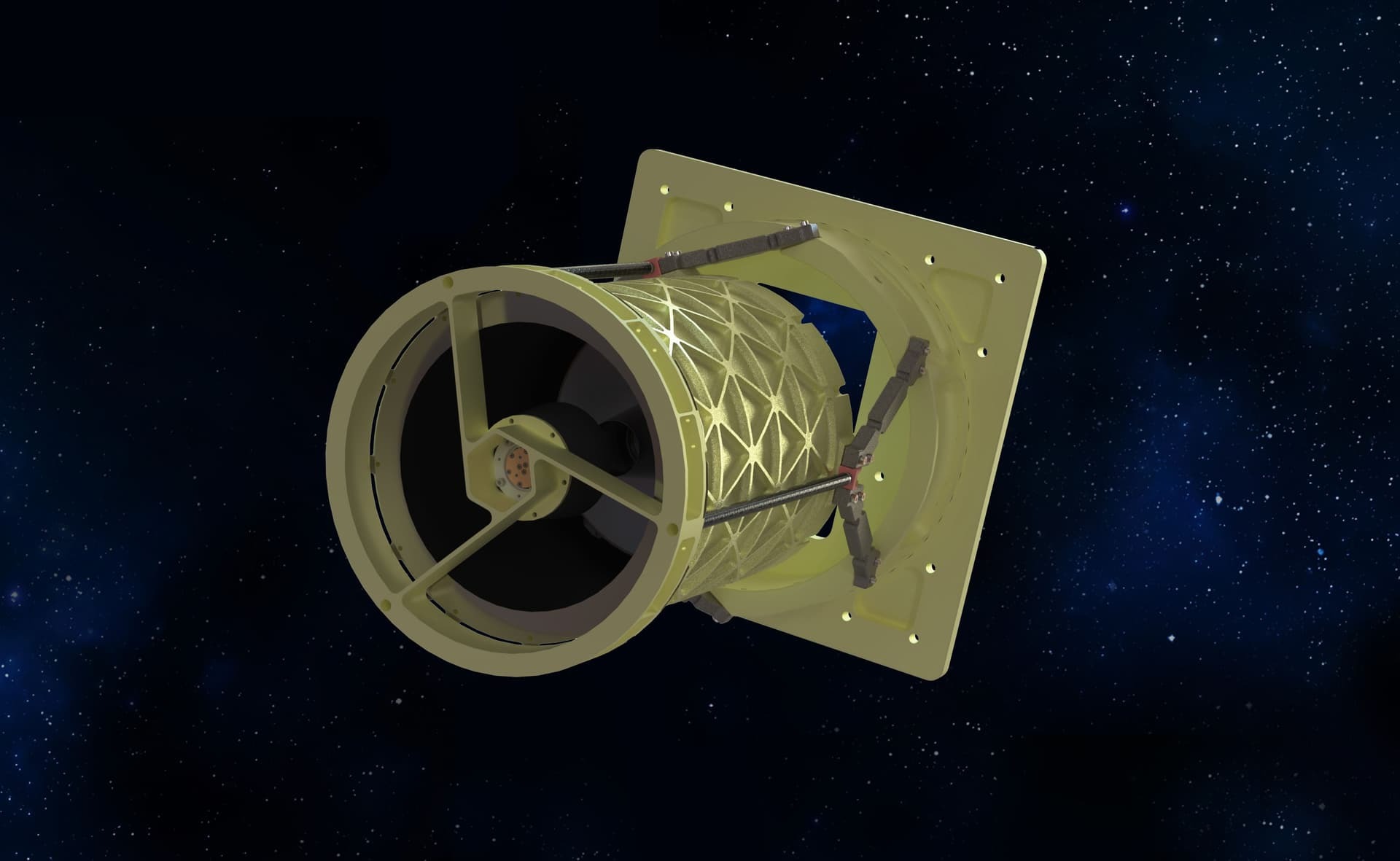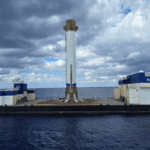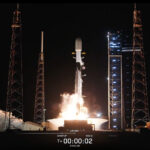Now Reading: The Response of Planetary Atmospheres To The Impact Of Icy Comets II: Exo-Earth Analogues
-
01
The Response of Planetary Atmospheres To The Impact Of Icy Comets II: Exo-Earth Analogues
The Response of Planetary Atmospheres To The Impact Of Icy Comets II: Exo-Earth Analogues
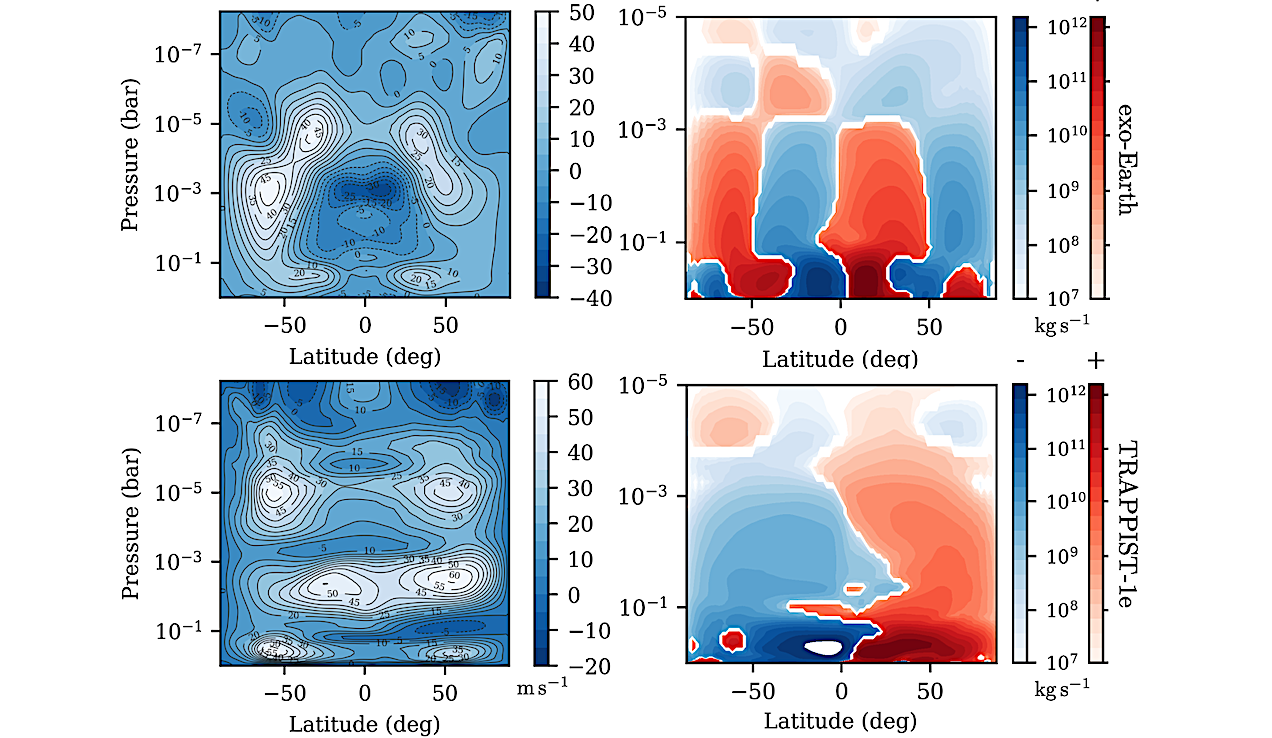

Zonally and temporally averaged zonal-wind (left) and meridional circulation streamfunction (right) profiles for both our exo-Earth analogue model (top) and the tidally-locked, TRAPPIST-1e-like, model (bottom) of SM25. Note that the meridional circulation profile is plotted on a log-scale with clockwise/anti-clockwise circulations shown in red/blue respectively. We do not plot the meridional circulation for P 10−5 bar due to the relative weakness of outer atmosphere (i.e. very low pressure) circulations. — astro-ph.EP
The orbital regime of a terrestrial planet plays a significant role in shaping its atmospheric dynamics, climate, and hence potential habitability.
The orbit is also likely to play a role in shaping the response of a planetary atmosphere to the influx of material from an icy cometary impact. To investigate this response, we model the impact of an icy cometary body with an Earth-analogue exoplanet (i.e. an Earth-like planet orbiting a Sun-like star with a diurnal cycle) using a cometary impact and breakup model coupled with the 3D Earth-System-Model WACCM6/CESM2.
To quantify the role that the atmospheric dynamics play in setting the response to a cometary impact, we compare our results with a previous study investigating an impact with a tidally-locked terrestrial exoplanet.
We find that the circulation regime of the planet plays a key role in shaping the response of the atmosphere to an icy cometary impact. The weak, multi-celled circulation structure that forms on Earth-like planets is efficient at mixing material horizontally but not vertically, limiting the transport of water from the deep break-up site to higher altitudes.
In turn, this limits the rate of water photodissociation at low pressures, reducing the magnitude of post-impact changes to composition. It also reduces the potential observability of an impact due to weakened cloud ice formation, and hence scattering, at low pressures.
Despite this, small changes to the overall composition of the planet persist to quasi-steady-state, reinforcing the idea that ongoing bombardment may help to shape the composition/habitability of terrestrial worlds.
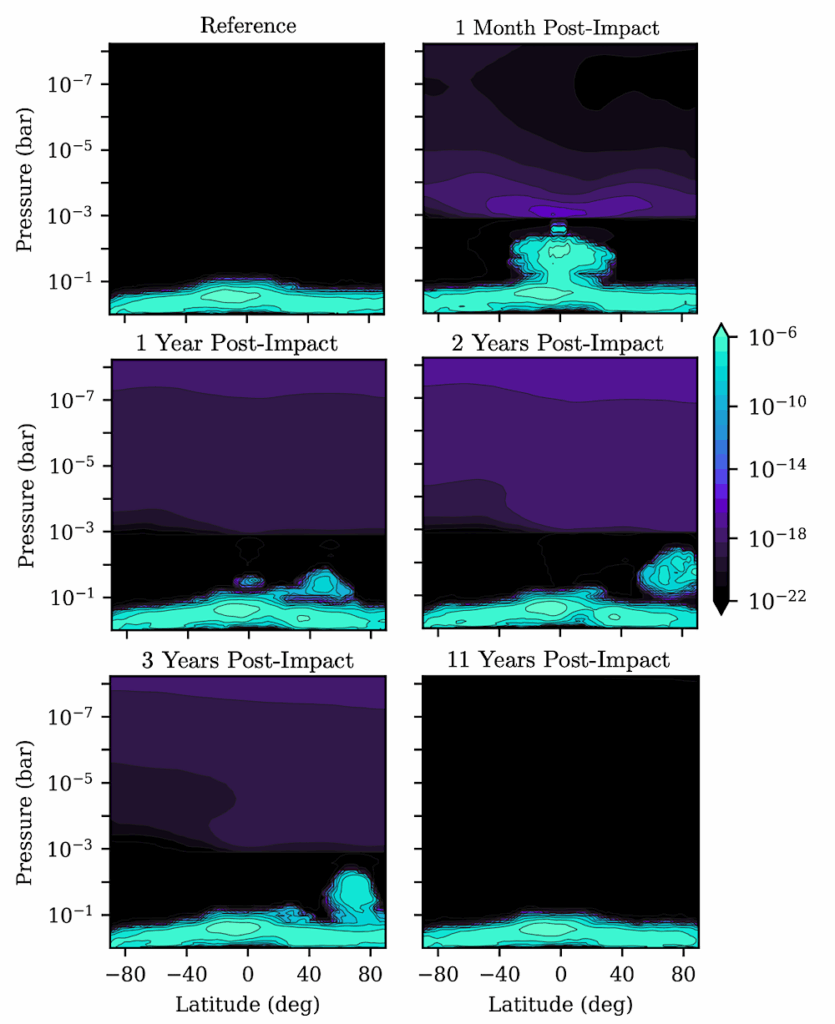
Zonally and temporally averaged cloud ice mixing ratio for both our reference atmosphere (top left) and at five points in time in our exo-Earth analogue cometary impact model: one month (top right), one year (middle left), two years (middle right), three years (bottom left), and eleven years (bottom right) post-impact, by which time the average cloud ice mixing ratio has returned to a state similar to that found in our reference atmosphere. — astro-ph.EP
F. Sainsbury-Martinez, C. Walsh
Comments: 17 Pages, 5 Figures, and Appendix. Accepted for publication in ApJ
Subjects: Earth and Planetary Astrophysics (astro-ph.EP)
Cite as: arXiv:2507.18256 [astro-ph.EP] (or arXiv:2507.18256v1 [astro-ph.EP] for this version)
https://doi.org/10.48550/arXiv.2507.18256
Focus to learn more
Submission history
From: Felix Sainsbury-Martinez
[v1] Thu, 24 Jul 2025 09:55:21 UTC (6,860 KB)
https://arxiv.org/abs/2507.18256
Astrobiology, Exoplanet,
Stay Informed With the Latest & Most Important News
Previous Post
Next Post
-
 012024 in Review: Highlights from NASA in Silicon Valley
012024 in Review: Highlights from NASA in Silicon Valley -
 02Panasonic Leica Summilux DG 15mm f/1.7 ASPH review
02Panasonic Leica Summilux DG 15mm f/1.7 ASPH review -
 03How New NASA, India Earth Satellite NISAR Will See Earth
03How New NASA, India Earth Satellite NISAR Will See Earth -
 04And Thus Begins A New Year For Life On Earth
04And Thus Begins A New Year For Life On Earth -
 05Astronomy Activation Ambassadors: A New Era
05Astronomy Activation Ambassadors: A New Era -
06SpaceX launch surge helps set new global launch record in 2024
-
 07Space Force plans new ‘Futures Command’ amid pressure to speed up modernization
07Space Force plans new ‘Futures Command’ amid pressure to speed up modernization












